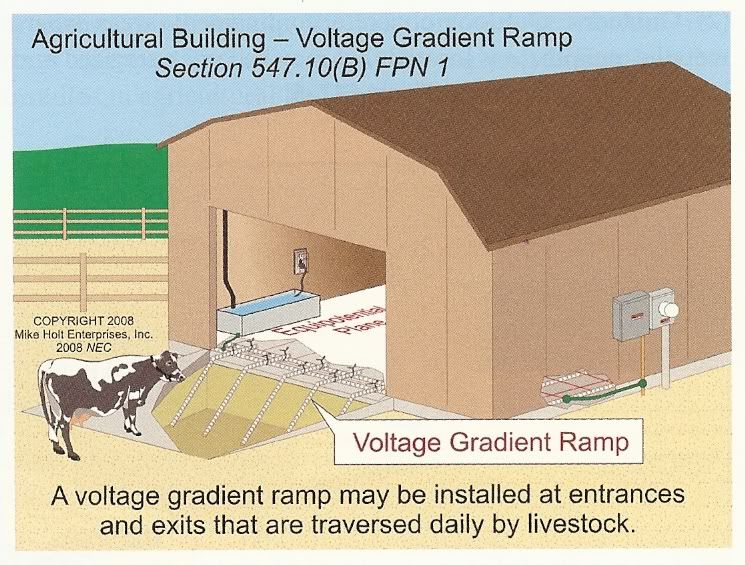I was wondering about the equalpotional plane. If you bring everything to the same voltage, and lets say theres 3 volts on it all. Then you step off of it and now one of your feet is on the equalpotional plane, and one of them is on the ground wouldn't you get shocked?
You are using an out of date browser. It may not display this or other websites correctly.
You should upgrade or use an alternative browser.
You should upgrade or use an alternative browser.
I was watching mike holts video on stray voltage
- Thread starter zappy
- Start date
- Status
- Not open for further replies.
LarryFine
Master Electrician Electric Contractor Richmond VA
- Location
- Henrico County, VA
- Occupation
- Electrical Contractor
Not by 3 volts, necessarily, but yes, there is a step-potential risk. That's why pools require the mesh a certain distance from the rim, and I believe sub-station ground mats have a similar requirement.I was wondering about the equalpotional plane. If you bring everything to the same voltage, and lets say theres 3 volts on it all. Then you step off of it and now one of your feet is on the equalpotional plane, and one of them is on the ground wouldn't you get shocked?
quogueelectric
Senior Member
- Location
- new york
Tis would depend on if the source was somehow bonded to ground . If not bird on a wire scenario.I was wondering about the equalpotional plane. If you bring everything to the same voltage, and lets say theres 3 volts on it all. Then you step off of it and now one of your feet is on the equalpotional plane, and one of them is on the ground wouldn't you get shocked?
radiopet
Senior Member
- Location
- Spotsylvania, VA
This is not nearly as much a concern from "mesh to ground" as it is from "pool to mesh" so to speak. The intent of the EPBG is to raise the voltage within the plain to the same potential but once you leave the "grid" area to the lets say ground the step potential is not of the same concern as you would have around the contour of the pool in this example.
If that even makes sense....
If that even makes sense....
Twoskinsoneman
Senior Member
- Location
- West Virginia, USA NEC: 2020
- Occupation
- Facility Senior Electrician
I was wondering about the equalpotional plane. If you bring everything to the same voltage, and lets say theres 3 volts on it all. Then you step off of it and now one of your feet is on the equalpotional plane, and one of them is on the ground wouldn't you get shocked?
To prevent this same problem affecting cattle the answer is a gradient ramp

electricalperson
Senior Member
- Location
- massachusetts
this was an awesome video. i have a full understanding on stray voltage now thanks to mike holt 
- Status
- Not open for further replies.

